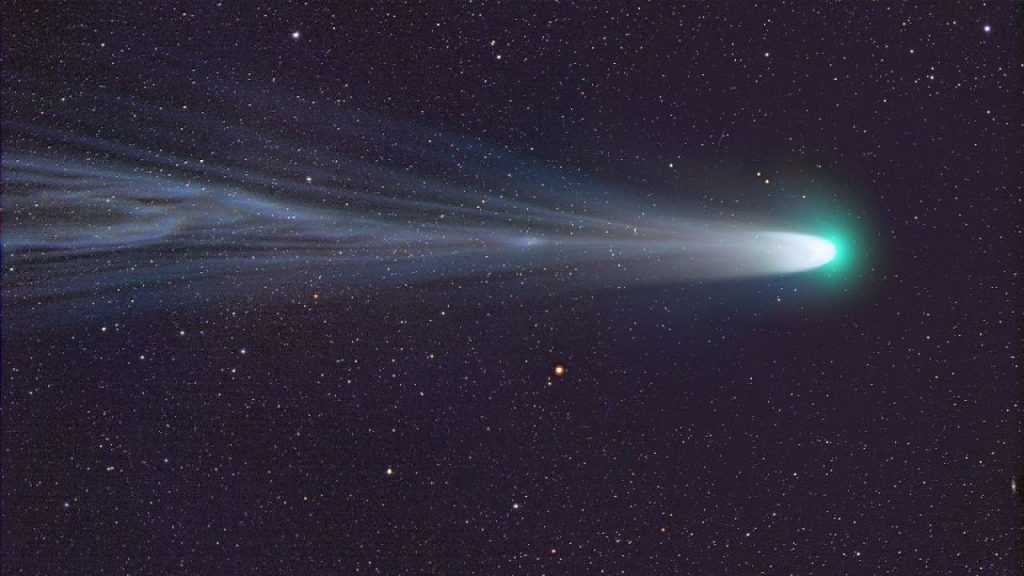The head of a comet consistently glows green; the tail generally doesn’t. That fuses Comet Leonard, which made its closest pass to the sun on Monday and is heading interminably again. A gathering of scientists have now thought about a detailed explanation for this multi-chromatic behavior. The molecule obligated for the emerald color gets casually missed sunlight inside a few days of being made near the comet’s core, leaving almost nothing to sparkle green in the tail.
“We showed unequivocally the manner by which that happens in the lab by using UV lasers, assessing definitively the way that the molecule blows isolated,” said Timothy W. Schmidt, a professor of science at the University of New South Wales in Australia. As a comet – a group of ices and dust – approaches the sun, it heats up and its ices go to gas, conveying a feathery atmosphere known as the obviousness. The atmosphere joins carbon-based molecules that are subsequently blasted with brilliant light from the sun, separating it and stripping off outer pieces. That makes a fundamental anyway sensitive molecule known as dicarbon, or C₂ in engineered documentation. It is two carbon atoms built up together.
Scientists have known for essentially a century that photons can pound dicarbon molecules into an excited state. In light of the quantum thought of the universe, an excited molecule gets back to its ground state by transmitting a photon. For dicarbon, the photon is consistently one of green light. This explained the green shade of comet daze states. In any case, the reasonable lack of dicarbon in the comet tails was something of confidential. So Schmidt re-made what’s happening in their examination focus. To convey dicarbon, they started with molecules involving two carbon atoms and four chlorine atoms and used a laser to strip off the chlorines, leaving just dicarbon. Then, they used another laser to isolate the dicarbon, assessing definitively how much energy that required.
Also Read: Failed Russian Rocket Has Its Parts Crash Land On Earth Uncontrollably
From that, they showed how the dicarbon molecules expected to ingest two photons to be blown isolated, and the lifetime of a dicarbon molecule washed in sunlight is around 44 hours. In that time, the molecules might travel 80,000 miles or close – extremely far. In any case, comet tails can broaden countless miles. Appropriately, there would be essentially no dicarbon, and no green shimmer, there. That generally fits with what has been found in comets. Schmidt’s gathering reported its disclosures last month in a paper circulated in Proceedings of the National Academy of Sciences.
“How they’re treating the establishment that is critical to explaining the insights,” said Anita Cochran, assistant head of the University of Texas’ McDonald Observatory who was not related with the assessment. “Understanding carbon in the universe is truly critical since it is a for the most part anticipated species.” William Jackson, an emeritus professor of science at the University of California, Davis, recognized the work at this point said there was plausible more happening behind the scenes. He saw that a photograph of a comet associated with the paper shows a green outrageous lethargies just as a slight smidgen of green in the tail. “I think this is an exceptional representation of the meaning of doing investigate focus assessments and combining with infinite insights, and endeavoring to get what you see,” Jackson said.
Regardless, the flooding sunlight most likely makes extra dicarbon in the comet tails and pounds the molecules into a variety of excited states. “It’s unreasonably simple to say that you don’t see C₂ in the tail,” Jackson said.
